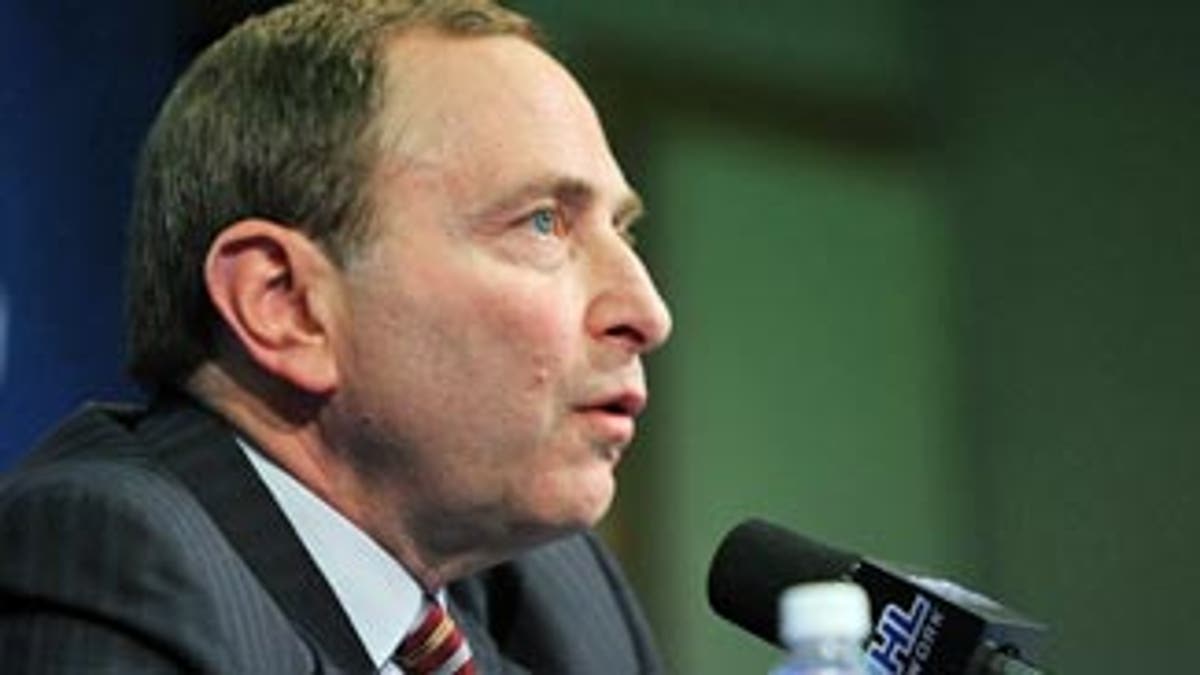
BOCA RATON, Fla. -- The general managers spent the first day of their annual meetings digesting a comprehensive presentation by the NHL's Hockey Operations Department that examined how and why concussions are caused.
The tone at the end of Monday's meeting here was positive. Many GMs said the appetite to create a safer workplace for the players is strong, but it's essential for them to take a wait-and-see approach for now. That's because there is plenty of debate about player safety, specifically as it relates to head hits, over the next two days.
Nobody can say for certain whether the GMs will recommend any type of rule change or new language for a current rule before parting ways on Wednesday afternoon, but the general feeling on Day 1 is there is a movement to improve the current standards regarding player safety in the NHL.
"I'm not in favor of anything at this point. I'm just listening," Carolina Hurricanes GM Jim Rutherford said. "We had breakout groups and the group that I was in we had great conversation today about different things. I feel very good about this morning's meeting. Everybody is taking this very seriously, as they should be."
The GMs broke out into small discussion groups to discuss the Hockey Operations findings, such as the fact that 26 percent of the concussions that occurred this season through March 1 are from "accidental hits" whereas 17 percent resulted from "illegal hits." Forty-four percent of the concussions are from "legal hits" and eight percent are from fighting.
Five percent of the concussions were not accounted for because there was no video evidence for four concussions this season.
The League defines accidental hits as "incidents not involving opponents as well as inadvertent collisions with opponents." Examples would be getting hit by a teammate, tripping or falling on your own, getting struck by the puck or inadvertently colliding with an opponent.
David Steckel's hit on Sidney Crosby in the 2011 Bridgestone NHL Winter Classic falls into the accidental hits category, NHL Commissioner Gary Bettman said.
"Unfortunate, but that was the case," Bettman said.
An illegal hit is determined to have a penalty and/or supplemental discipline imposed with it. Rule 48, which renders illegal any lateral or blindside hit where the head is targeted and/or becomes the principal point of contact, falls into this category. However, Hockey Operations' research found only one concussion this season was caused by a blindside hit, down from four last season.
Legal hits are those that did not warrant a penalty or supplemental discipline such as hits to the body and hits to the head from anywhere but the blindside. The GMs saw examples of concussions occurring despite legal hits due to the head whipping back during the hit or colliding with the dasher boards or striking the ice after the hit was delivered.
"I think people will be surprised how many concussions occur from inadvertent contact," Toronto GM Brian Burke said. "The head shot rule we put in is working in my opinion as far as reducing the number of situations where players take a head shot from the blindside. I think that was a good rule change. Now we have to see if there are other things we can change on the ice surface to make it safer without changing the fabric of our game. Our game is a full-contact sport and there is no out of bounds. There are going to be injuries, but we have to find a way to minimize the head injuries if we can."
Finding a way is the challenge these general managers face, but that's why the League presented all of its data from the concussion research to the GMs on Monday. With the facts in front of them now, Tuesday and Wednesday can be spent discussing what can be done to create a safer environment for the players without taking any of the physical play or entertainment value out of the game.
"We're not looking to fundamentally change our game; we're looking to make it safer," Bettman said. "You can't do that in a haphazard manner and you don't just run off and do it in the middle of a season. What you want to do is make sure that you're identifying the issue you're trying to address and what you do in response will address that issue without fundamentally changing the game in ways that were never intended. We're not going to hurdle through this just to get it done. The key is to get it right.
"We're not just running off to give you what I call the magic bullet, or the silver bullet, because that doesn't exist."
Follow Dan Rosen on Twitter at: @drosennhl
